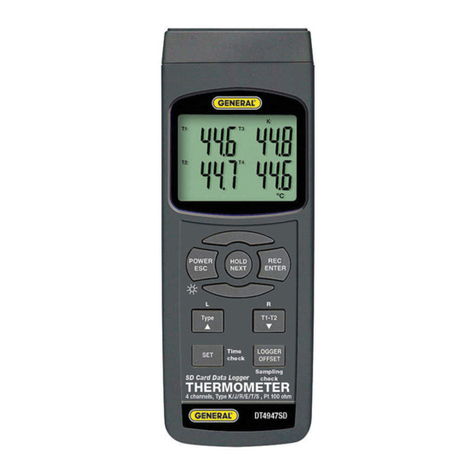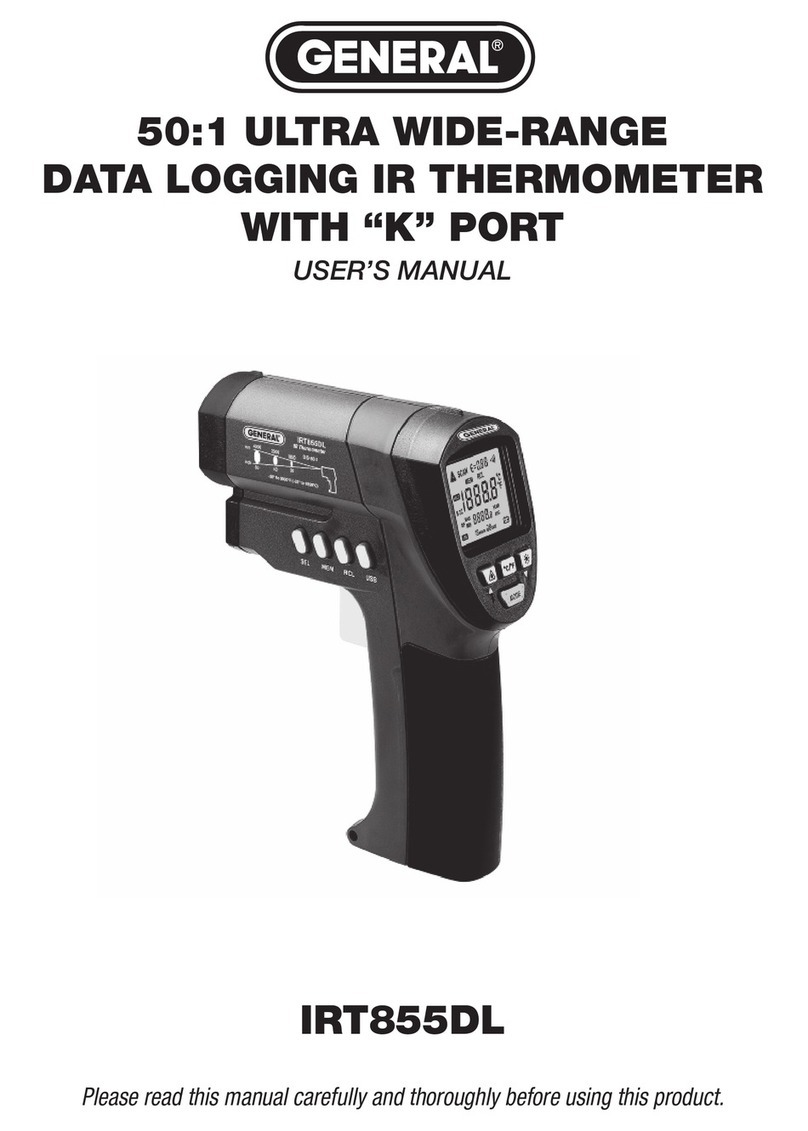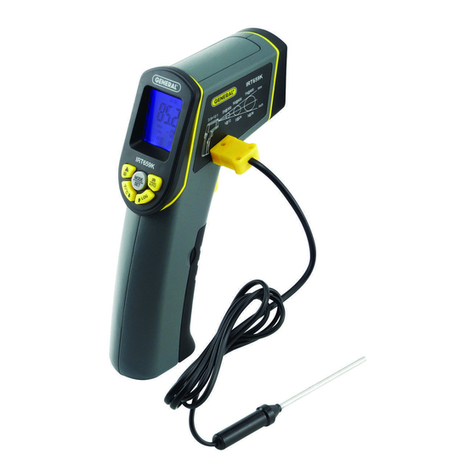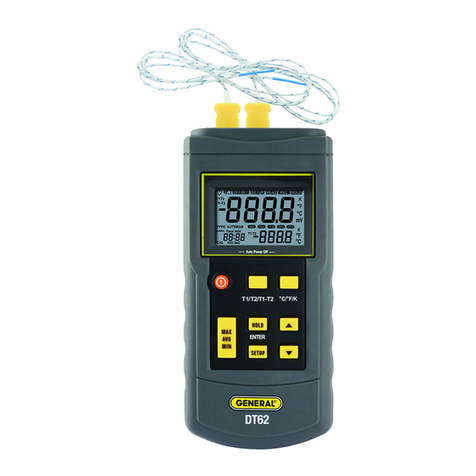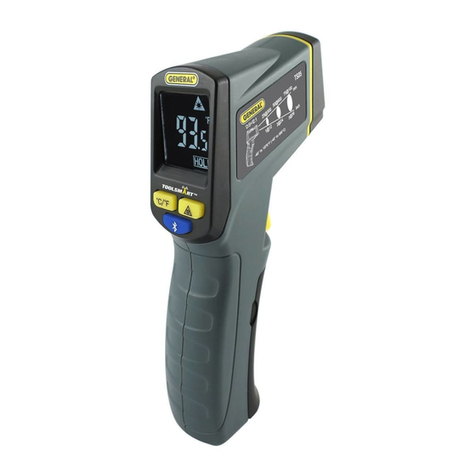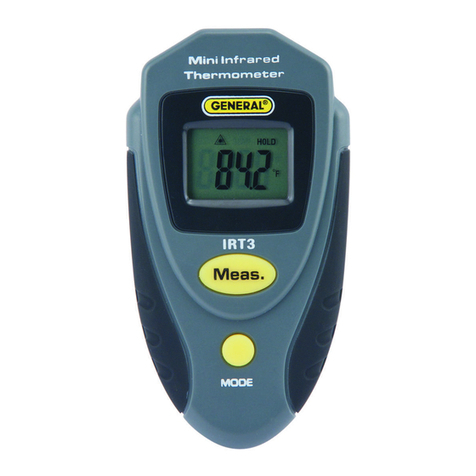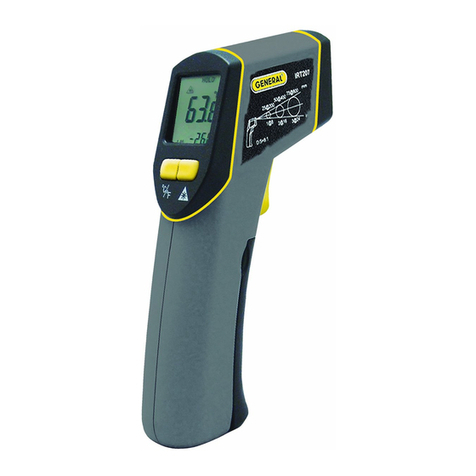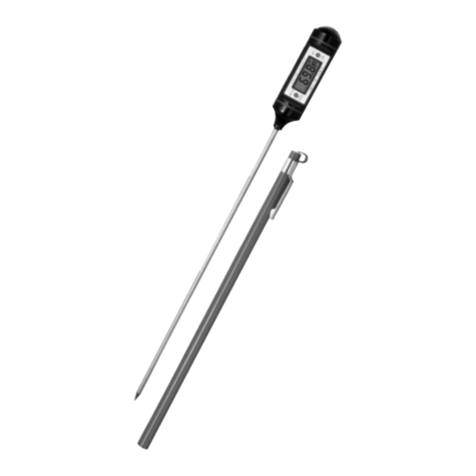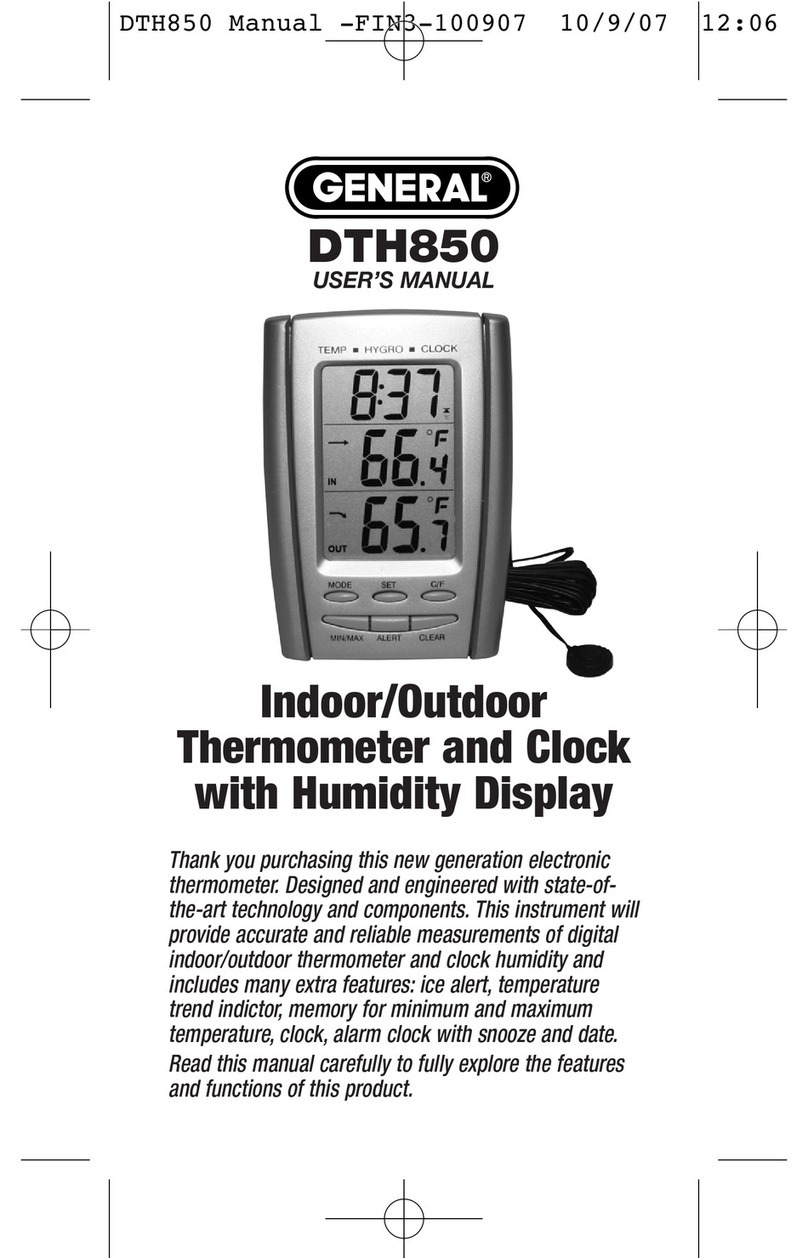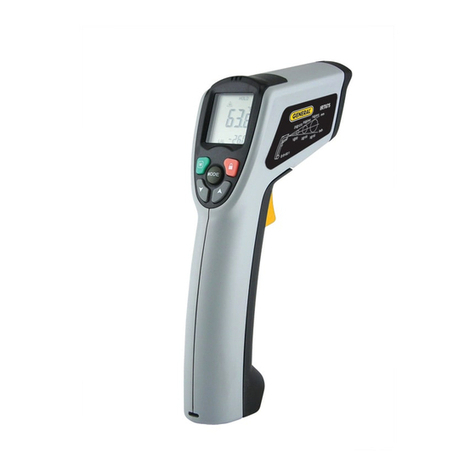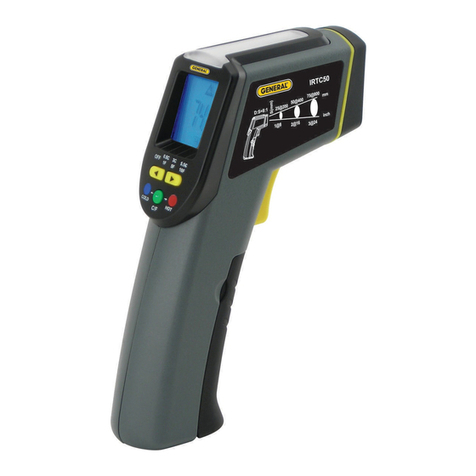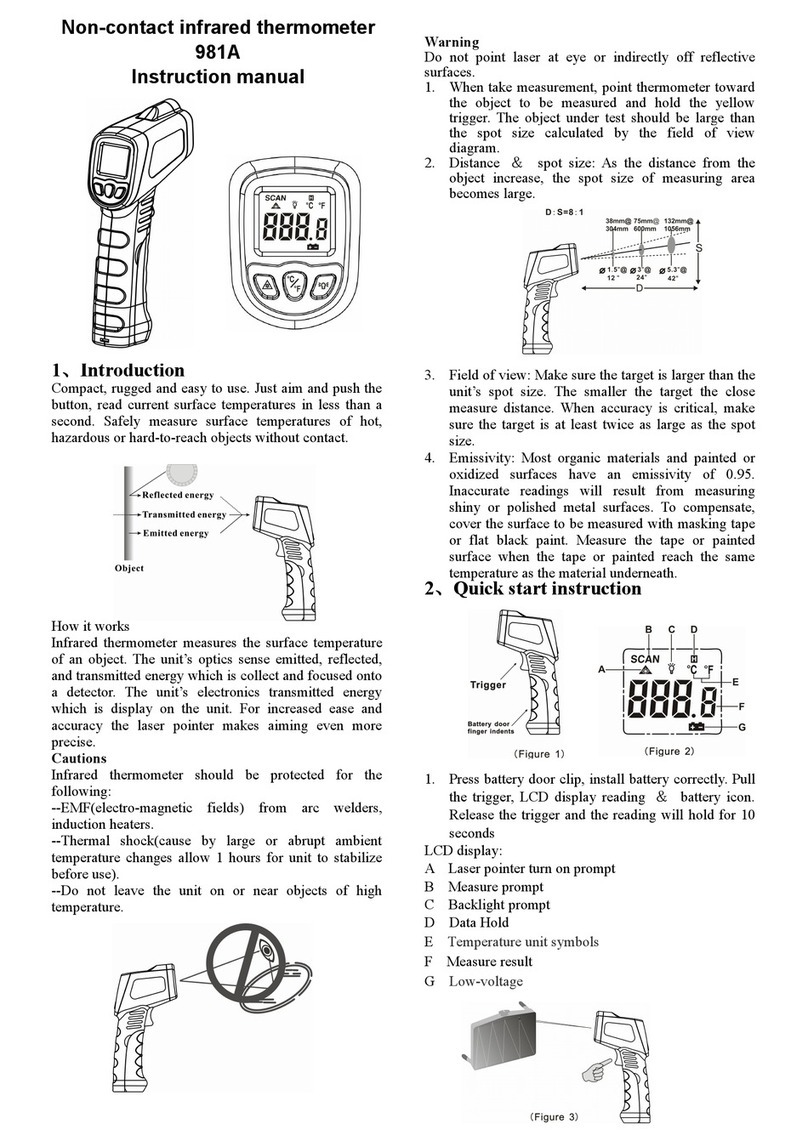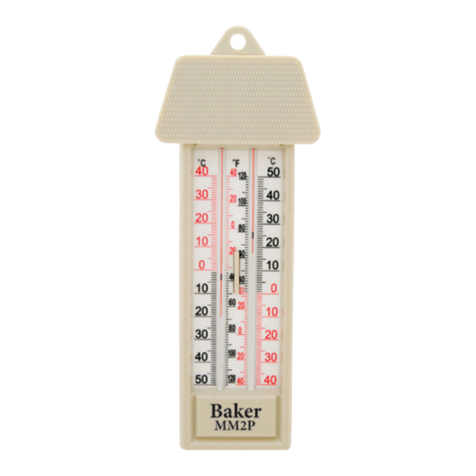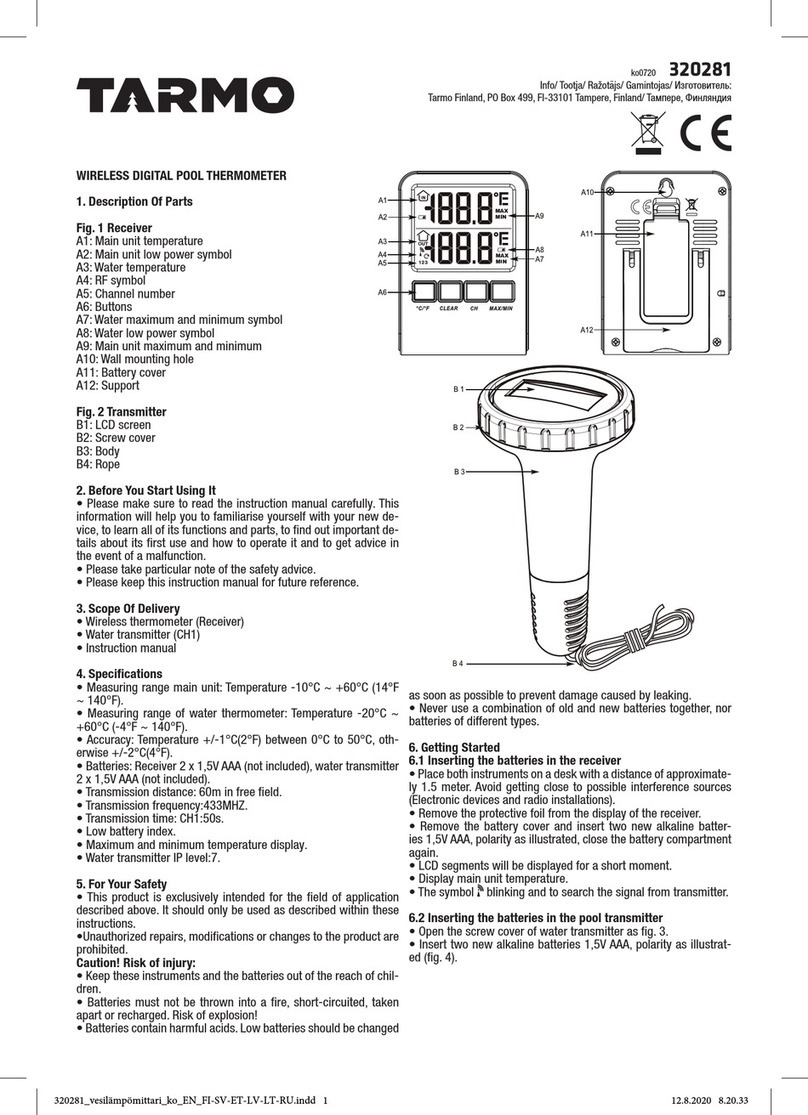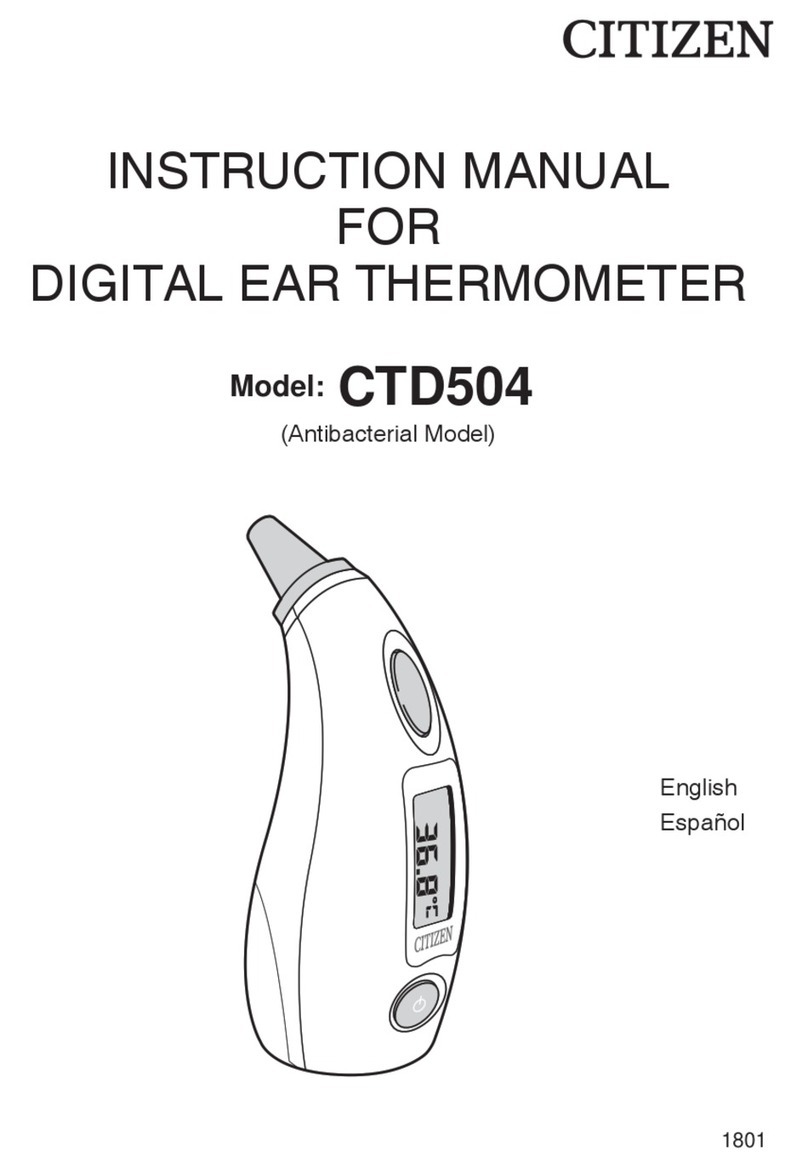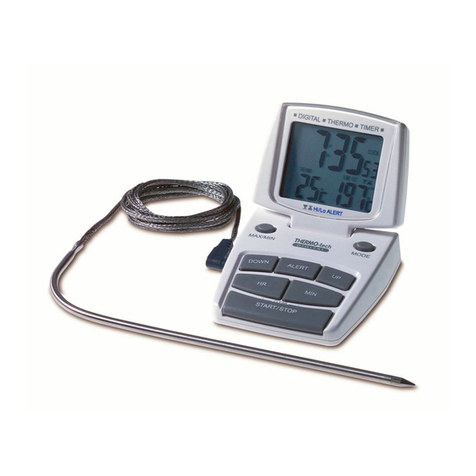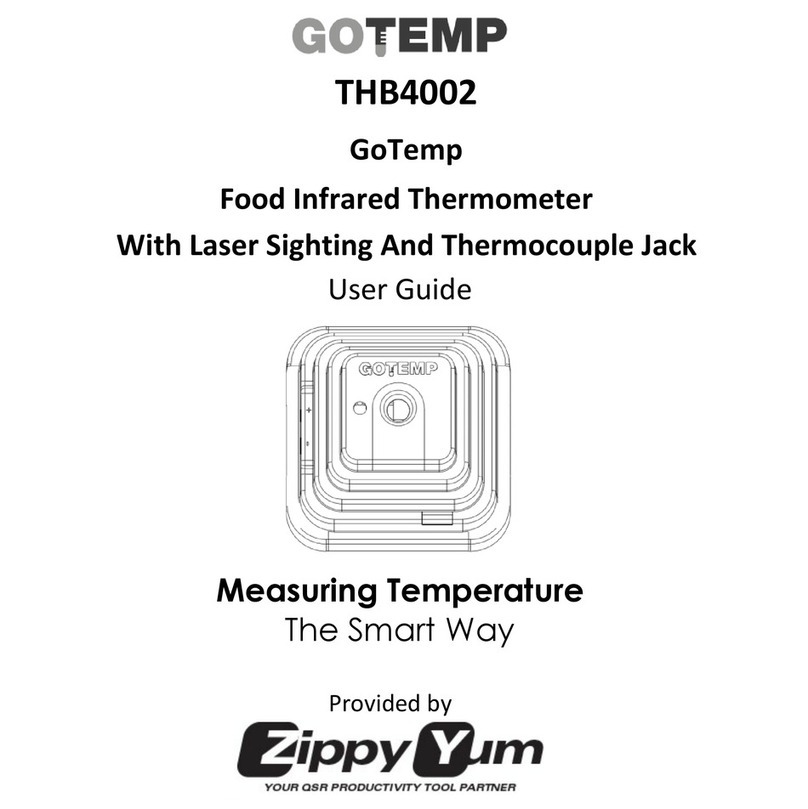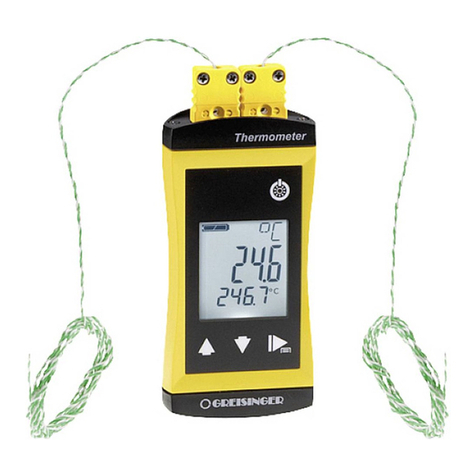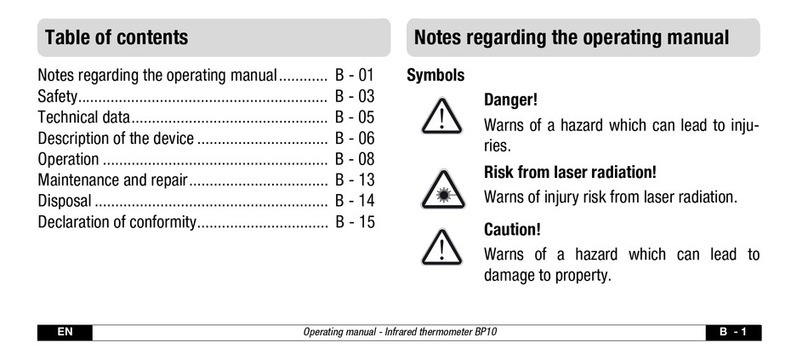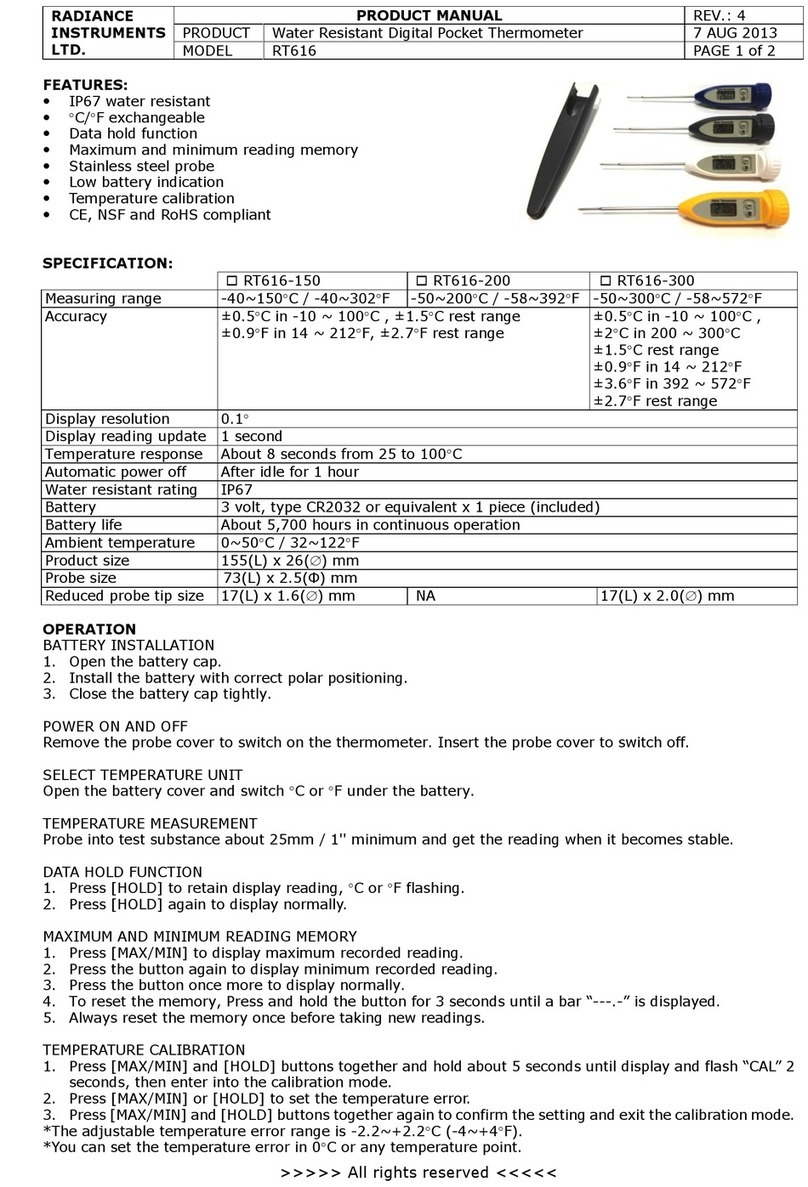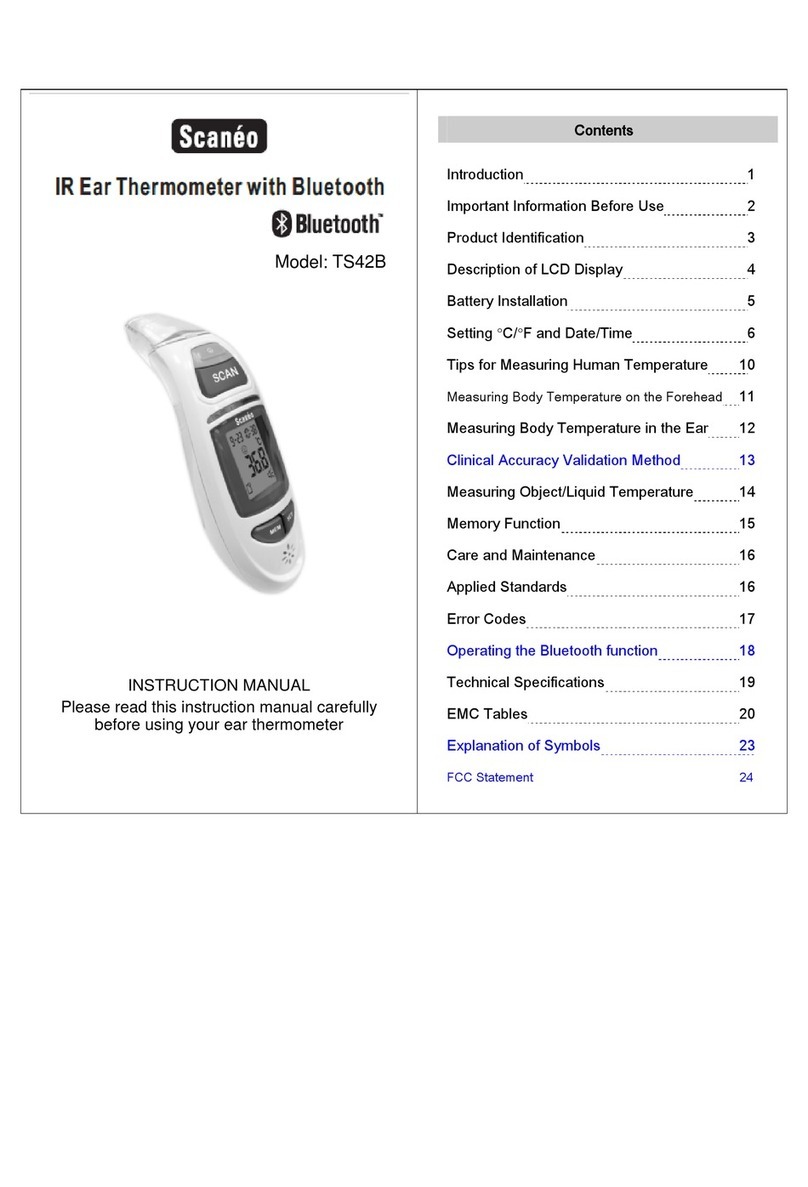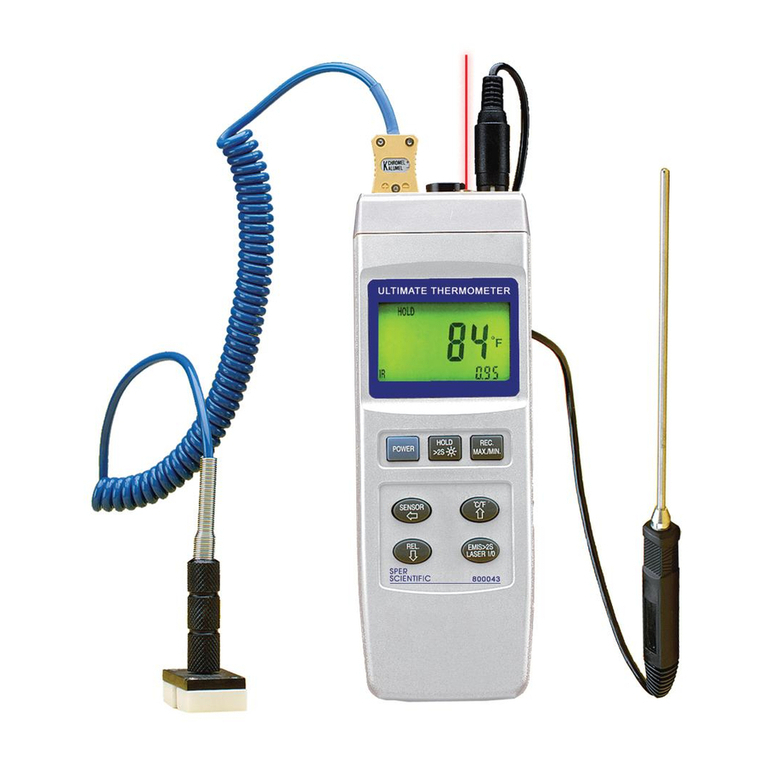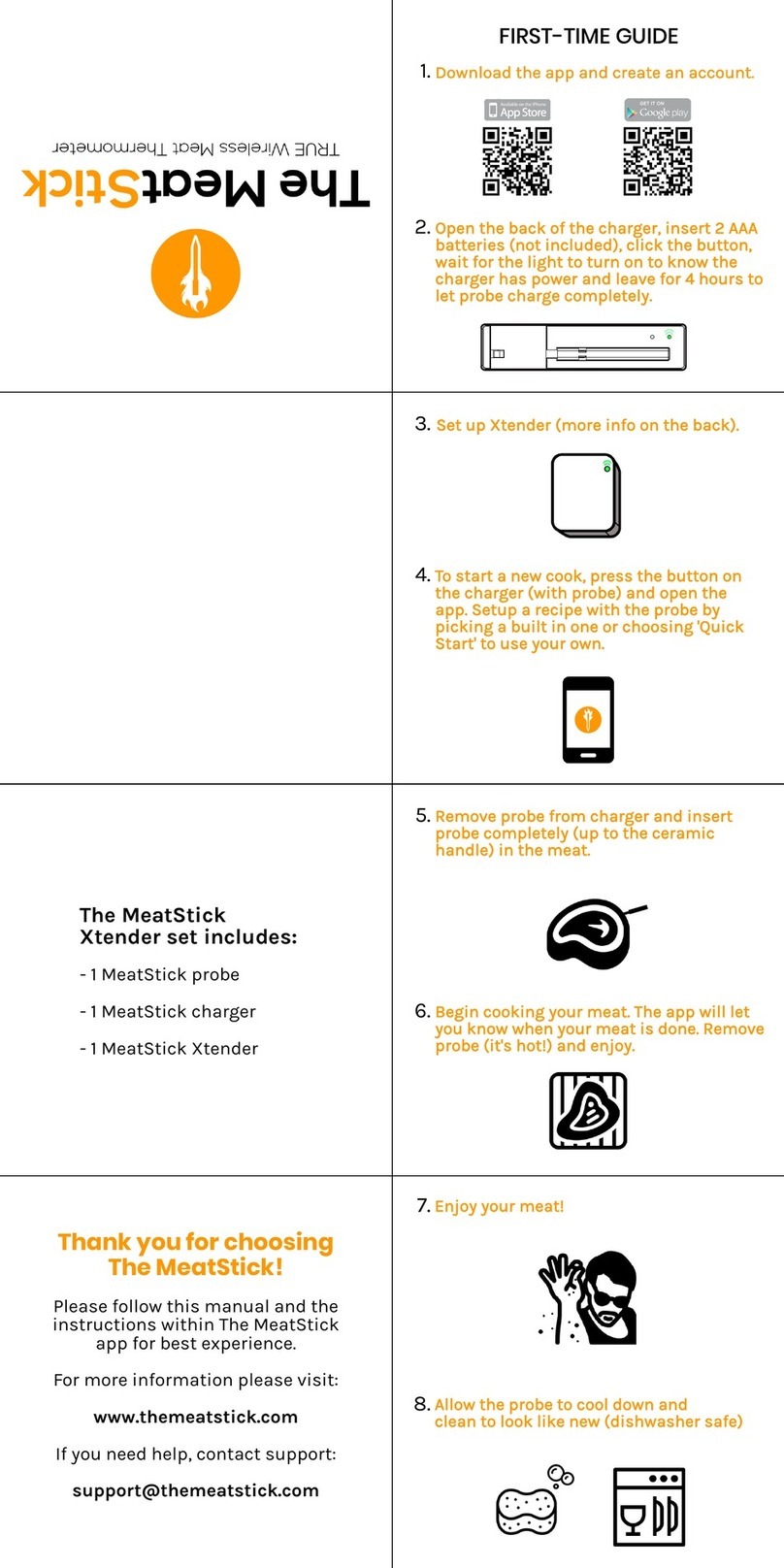
actual temperature. If background objects are hotter than the target, the measured temperature
will be higher than the target’s actual temperature. The IRT850K’s very large D:S ratio of 50:1
enables measurement of very high- or –low temperature objects from a safe distance.
To eliminate measurement error, move the IRT850K close enough to the target so it is the
only object in the field of view. (See Appendix I for an illustrative example.)
ACCOUNTING FOR EMISSIVITY
Emissivity is the ability of an object to reflect or absorb IR radiation (energy). Because the
IRT850K measures the amount of infrared energy emitted by a surface, its measurements are
most accurate when they take into account the characteristic emissivity of the target material.
A perfectly absorbent surface (called a black body) has an emissivity (represented by the Greek
letter ε) of 1; it absorbs 100% of the thermal energy hitting it. An object with an emissivity of 0.8
absorbs 80% of IR energy and reflects 20% of it. All emissivity values fall between 0 and 1; as a
rule, the shinier the surface, the lower its emissivity. The default emissivity setting of the IRT850K
is 0.95.
To maximize the accuracy of IRT850K measurements, you should enter the actual emissivity of
the target surface using the front-panel buttons. To do so, first determine the emissivity of the
surface whose temperature you wish to measure from the list in Appendix II. ompensating for
emissivity will particularly improve the accuracy of measurements of surfaces with emissivities
nearer to zero than to the IRT850K's default setting of 0.95.
To enter an emissivity value, begin by pressing the Emis. button (Fig. 1, allout 1). Then enter
the emissivity of your target by using the °C/°F and Lock buttons to change the reading on
the secondary (lower) readout from the default 0.95. The IRT850K’s emissivity setting can be
adjusted from 0.10 to 1.0 in steps of 0.01. Once you have reached the correct value, press the
Mode button (Fig. 1, allout 5) to store the setting as the new default.
If your target’s material is not listed in the table in Appendix II, you can determine its emissivity
by using the IRT850K to do the following:
1. Measure the temperature of the target with an optional “K” type thermocouple probe. This
requires switching to operation in PRB (“K” port) mode. Instructions for entering and
operating in this mode can be found on p. 7.
2. Return to operating in Scan mode. Use the Emis., °C/°F and Lock buttons to change
the emissivity setting until the temperature reading in Scan mode matches the one
obtained in PRB mode. When both readings are the same, the displayed emissivity value is
the correct one for your object or surface at that temperature.
OTHER OPERATING MODES
The Mode button also serves as the gateway for entering the
IRT850K’s other operating modes. Pressing the button repeatedly
steps through those modes in the sequence shown in Fig. 3.
Fig. 3. The functions available
through the IRT850K’s Mode button
6

